I love the prairie, and I mourn the demise of it as more and more prairie grasslands are tilled and converted to row crop farming. The prairie ecosystem evolved with the American bison—and the buffalo became the source of life for the Native Americans of the Great Plains. The closely interwoven relationships between prairie, buffalo, and Native Americans have been severed, for the most part, for oh so many reasons. Yet there is a pull to preserve that way of life, even in the smallest of ways, because of what we can learn from the prairie, from the buffalo, and from the people whose lives intertwined with both.
Driving along the highways in Missouri in the month of July, one notices a sweet triad of color, shape, and form—Queen Anne’s Lace, blue Chicory, and Purple Clover. Tall, willowy Queen Anne’s Lace, a member of the carrot family, is the most striking of the three with large, lacy flower heads that sway in the breeze. We stopped at the Eagleville rest area on southbound I-35, the welcome center for Missouri. A large prairie area with a mown walking path covers the hillside behind the building, and Queen Anne’s Lace grows along the periphery.
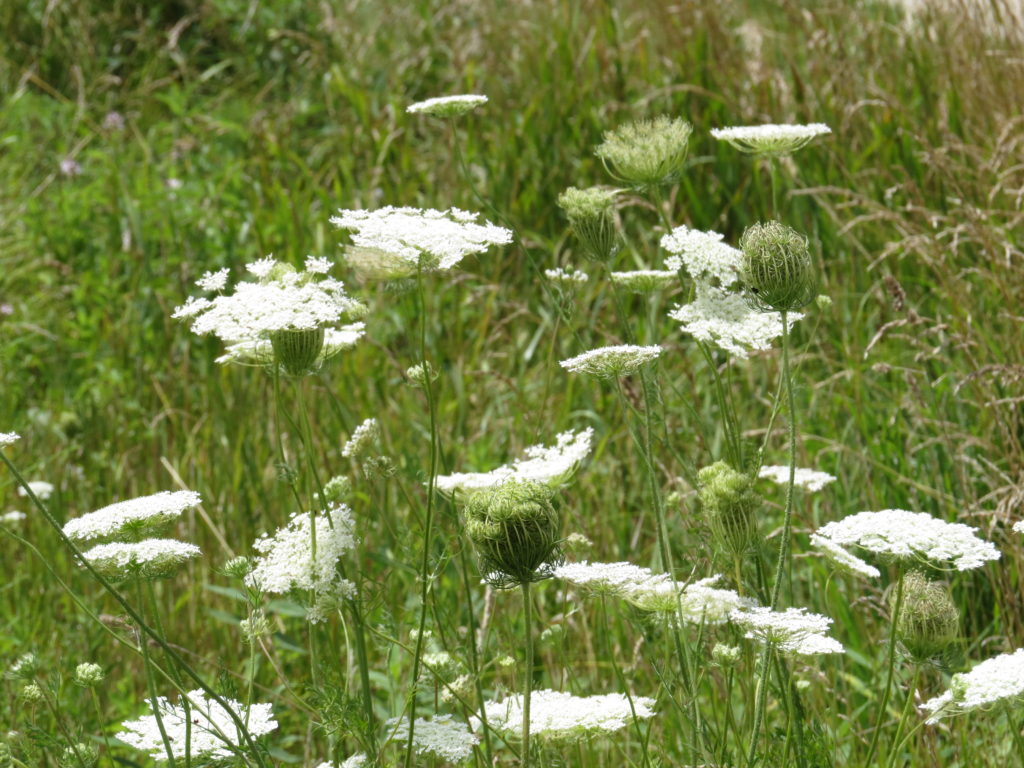
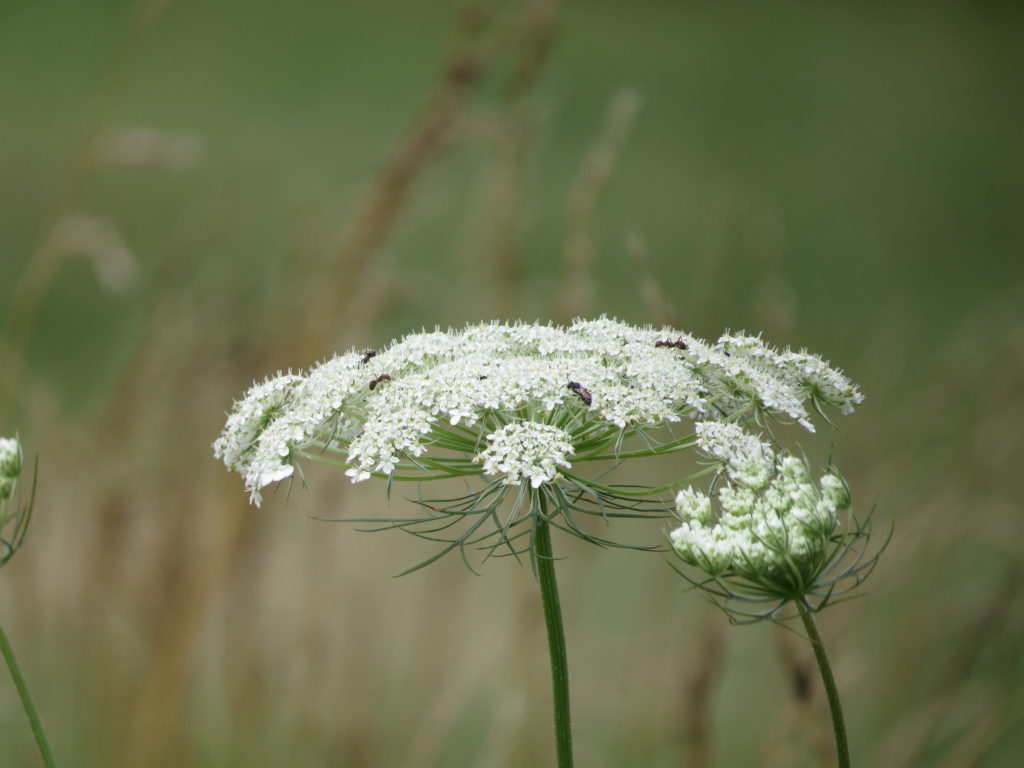
Up on the hill, a grazing buffalo dropped his large head into the tall prairie grass. Animals need to feel ‘safe enough’ to graze—if there is a threat or danger of any kind in the area, they won’t be eating. Grazing or feeding and digestion are processes that are undertaken when the body is relaxed (a parasympathetic state.)
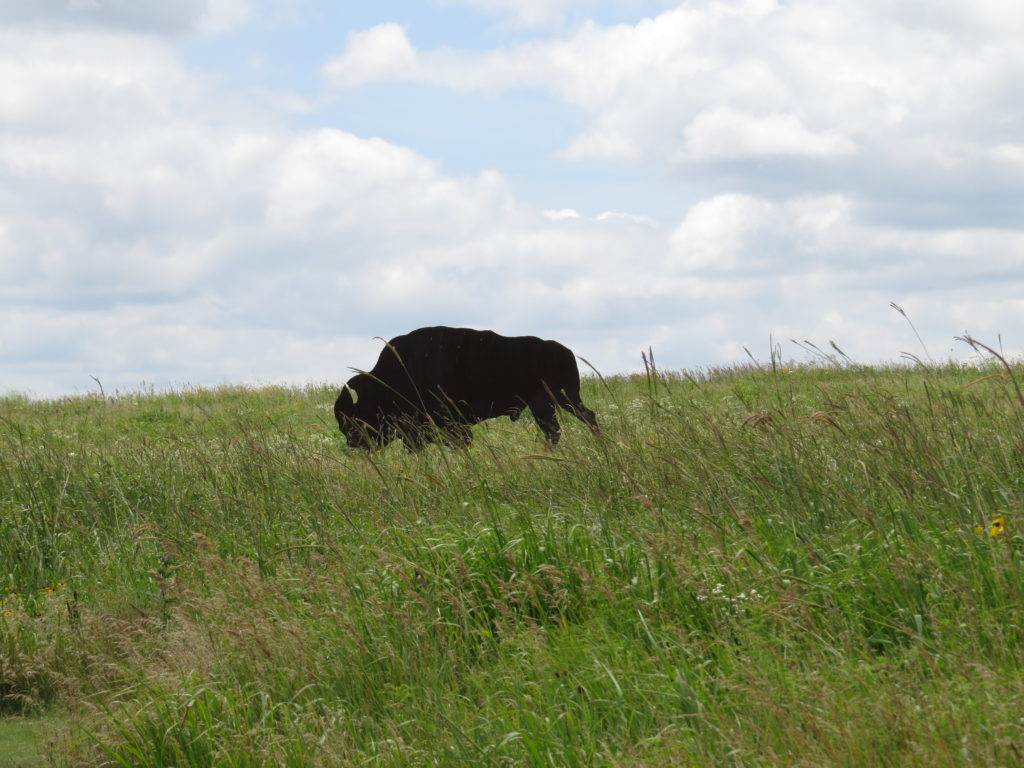
Another eye-catching and unusual plant in the tall grass prairie is Rattlesnake Master. Along with its great name, this plant is also a member of the carrot family. The gray-green seedheads hold small clusters of white flowers and were dried and used as rattles by native people.
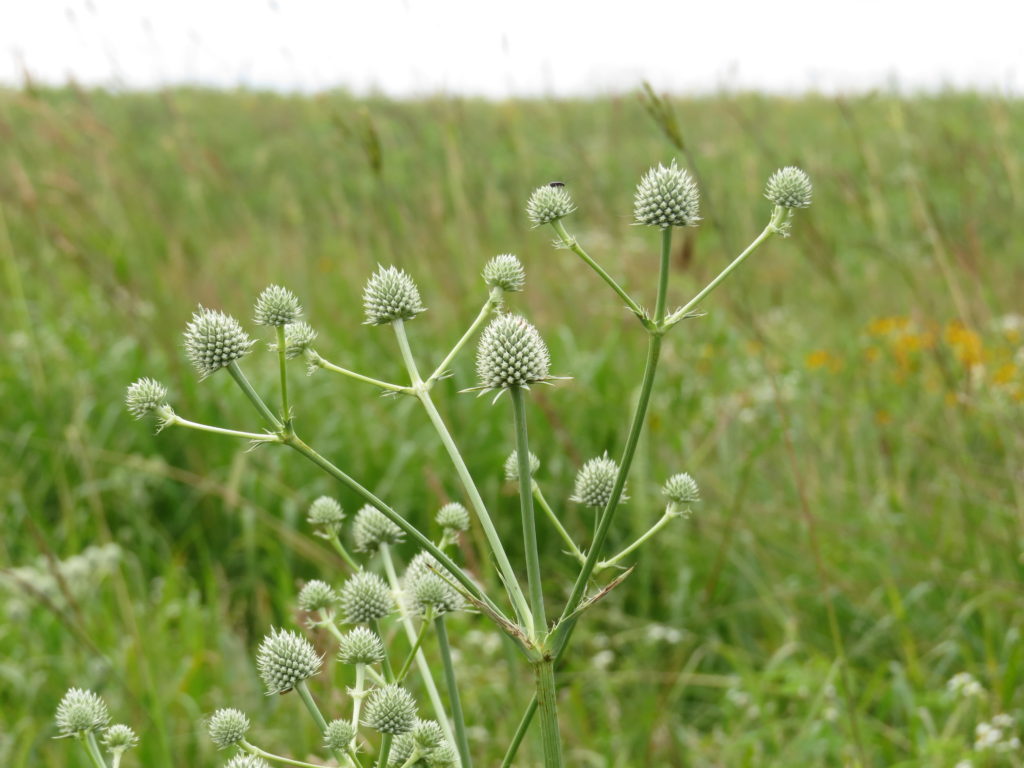
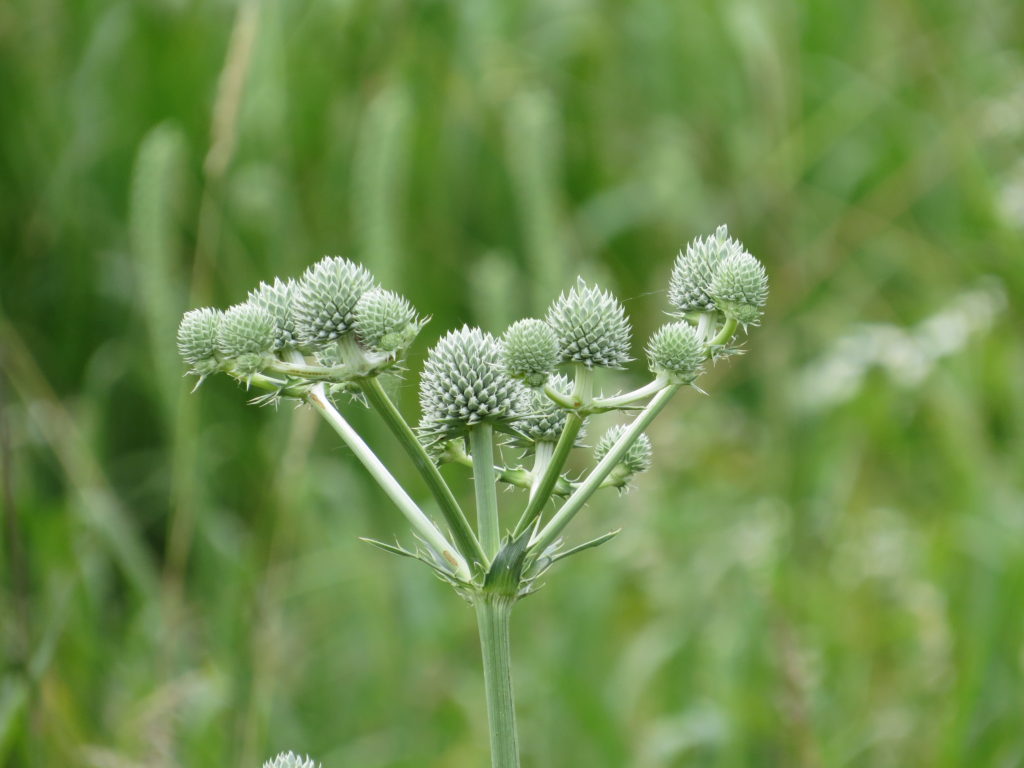
We don’t often think about grasses flowering, but every plant that produces seeds has some kind of flower, as indistinct as it may be.
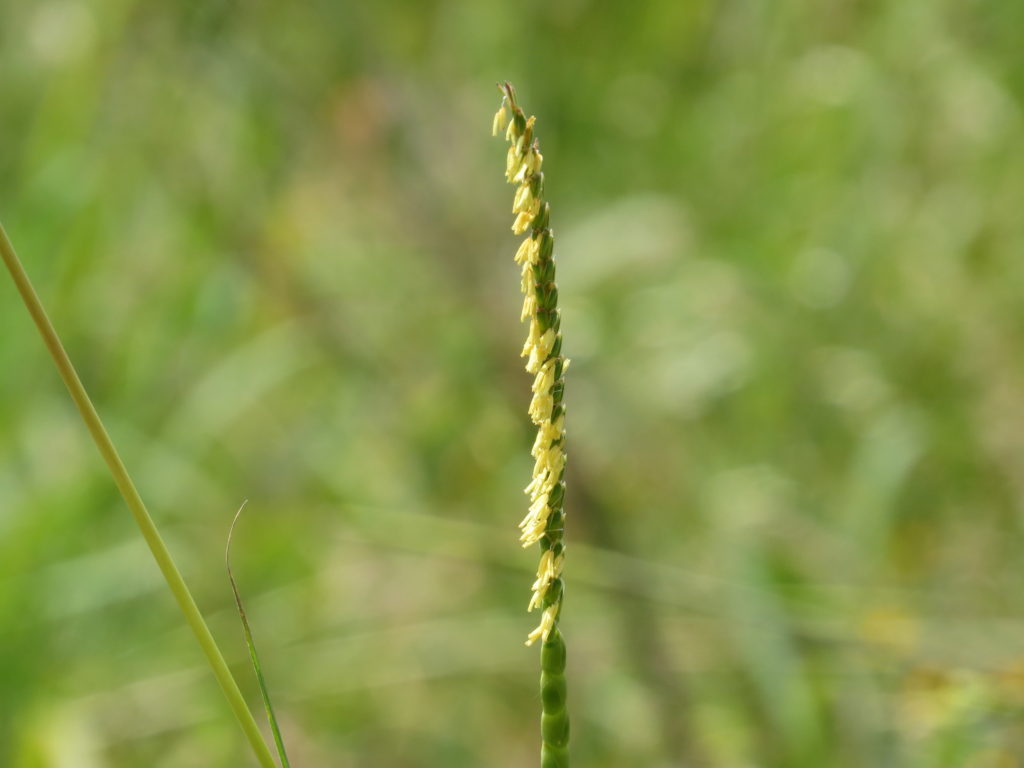
A standing buffalo on the hill was alert and watchful. Often herds of animals will have a sentry or ‘look out’ who will be aware of the surroundings and will warn others if there is some danger or predator.
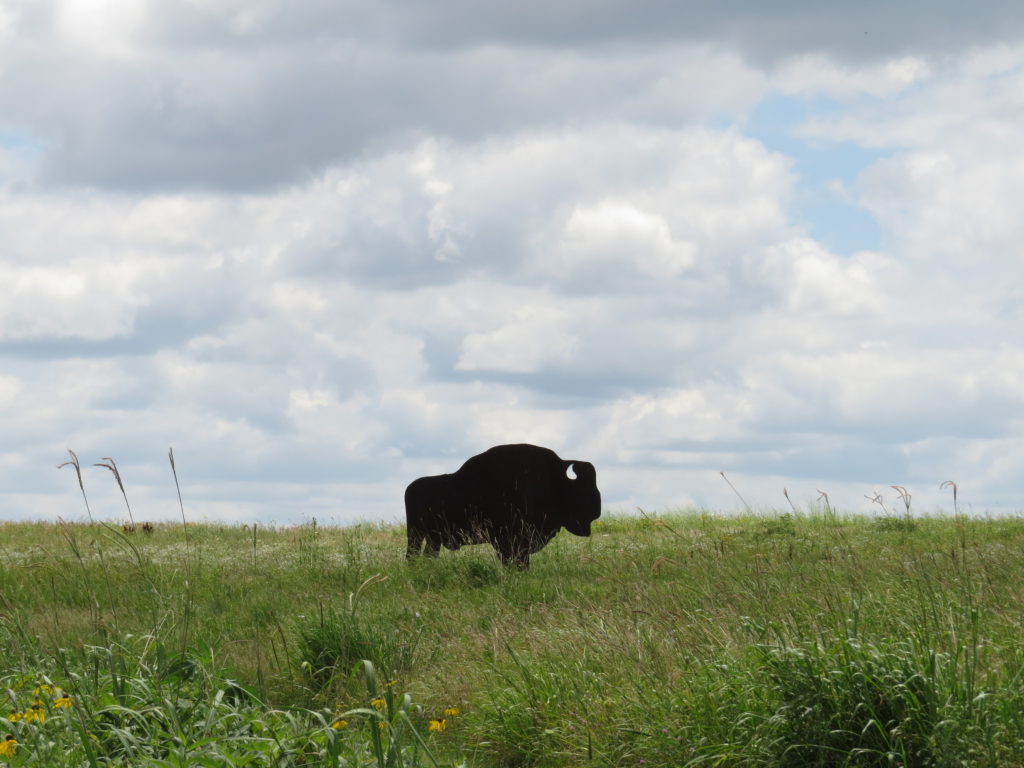
Spiky crowns of lavender flower petals top Wild Bergamot or Bee Balm. Native Americans used teas and tinctures of this minty plant to treat respiratory illness and other ailments.
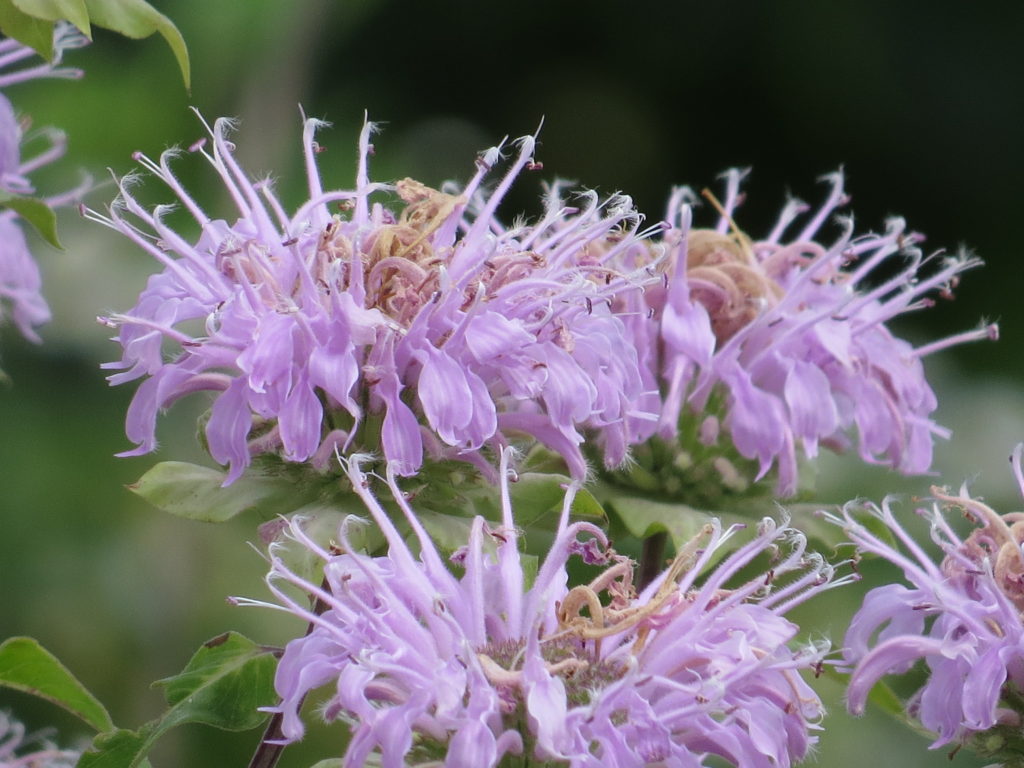
Another member of the Mint family is the Obedient Plant with snapdragon-like flowers that will stay in position after being turned in a certain way.
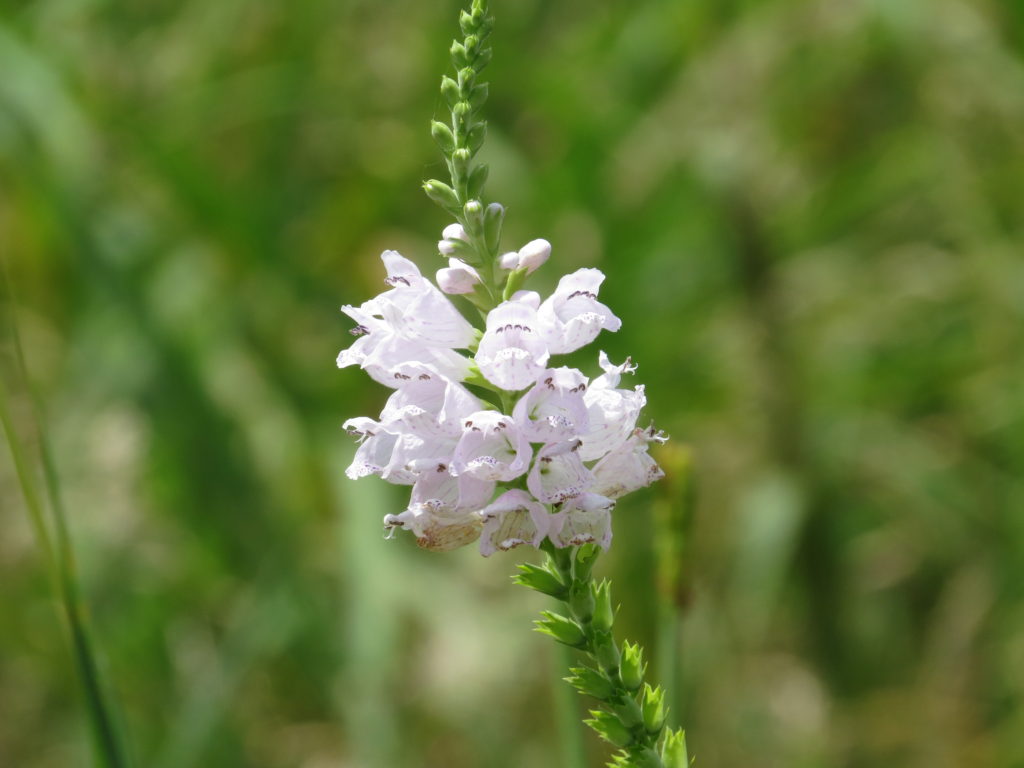
A charging buffalo haunched down in the prairie grass, head lowered, muscles taut, tail lifted. When danger has threatened the herd, energy is activated (sympathetic response), and the animals run or fight. (Running is the usual first line of defense. Males and closely threatened mamas will turn and fight.)

Blazing star or Liatris was just beginning to bloom from the top down on the purple-flowering spikes.
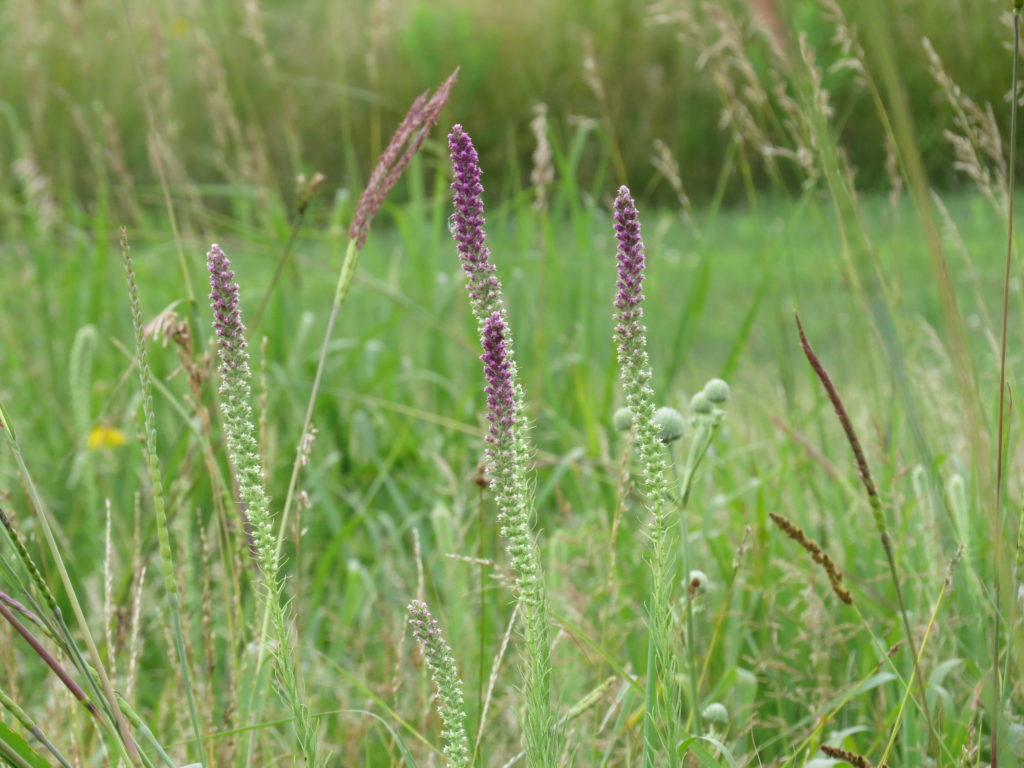
Dogbane is a toxic plant that was used by some native tribes as a fiber. The stems were rolled into strong, fine threads and twines.

While walking the prairie, stretching my legs, and appreciating the summer grasses and wildflowers, a Red-winged Blackbird chatted and sang its summer song.
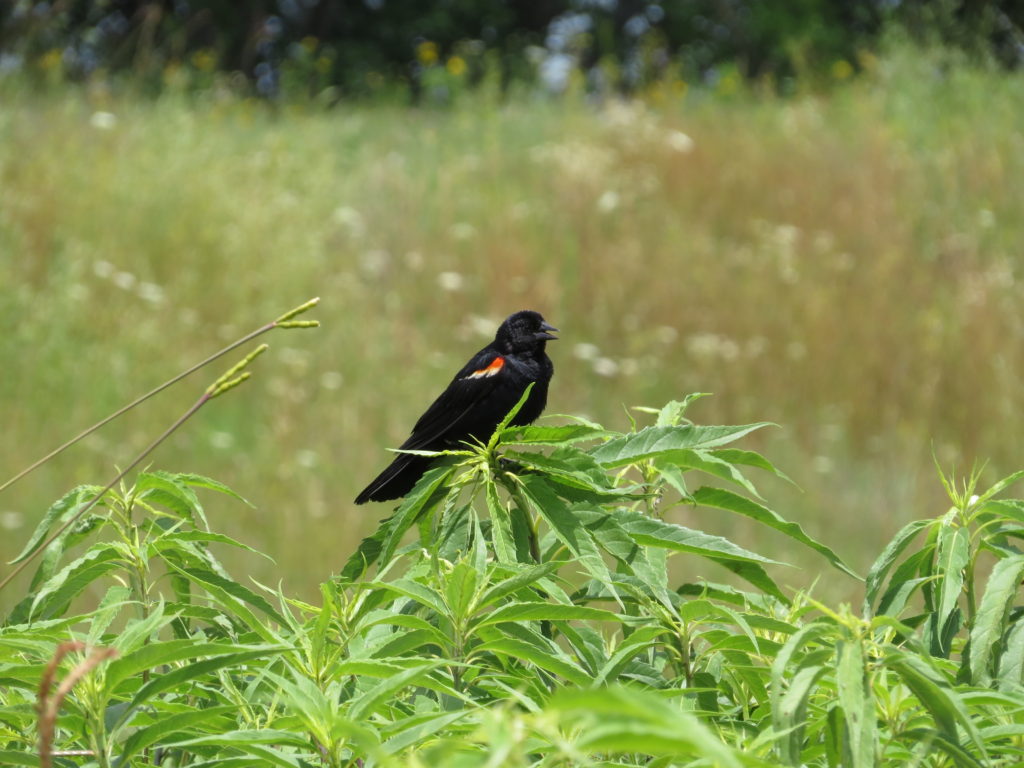
To me, walking through a prairie feels like ‘coming home.’ It is familiar, reliable, sustainable, and beautiful—like a sanctuary. It relaxes my body, calms my mind, and feeds my soul. The wide-open sky gives me perspective on how small each of us really is compared with the world at large. The prairie grasses and plants remind me that, as small as we each are, we are part of an ecosystem or community that works together to create the greater whole. We grow and bloom in our own unique and wonderful ways. The buffalo sculptures were produced by Creative Edge Master Shop in Fairfield, Iowa, a great tribute to the icons of the prairie. Their depictions of the different states of the herd animals reflect the physiology of every mammal, including humans. One state not depicted, or not seen at least, was that of the freeze state—like that of a young calf lying in the grass, hiding from danger. Freeze, fight or flight, and rest and digest are all states that we humans slide in and out of automatically, just like the buffalo. Ideally, we would spend most of our time between the alert, aware, yet calm state and the relaxed rest and digest state, and use the freeze and fight only when absolutely needed. But how often do we find ourselves immobilized by some threat or fear? How often do we feel like running away from our life and its problems? How often do we fight with sharp words, lowered heads, and win-at-all-cost ways? Feel it. Think about it. Make a strong, powerful rope out of a toxic situation. Find your place that feels like ‘coming home.’
Thank you, Denise. Reading your words and taking in your pictures always soothes my spirit. Perhaps you can help me appreciate my “obedient plant,” as it is the most disobedient plant in my garden, literally taking over the place!!! Would love to go on a road trip with you….
I need to come see your ‘disobedient’ plant! And make plans for a trip north…